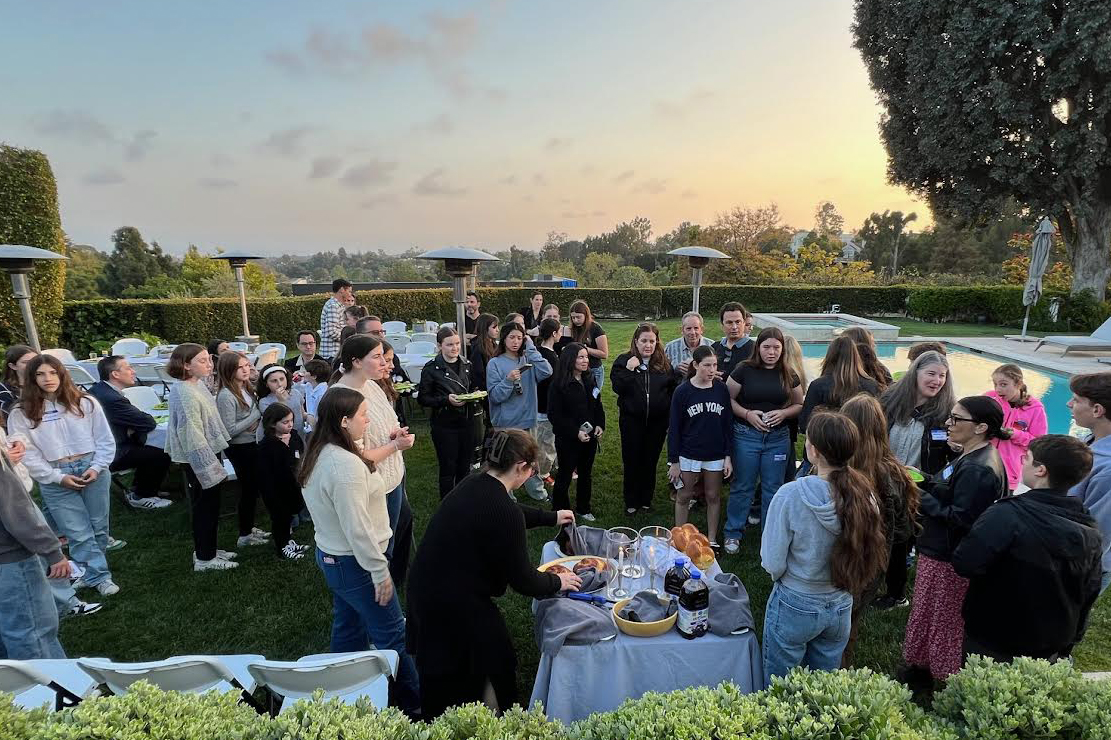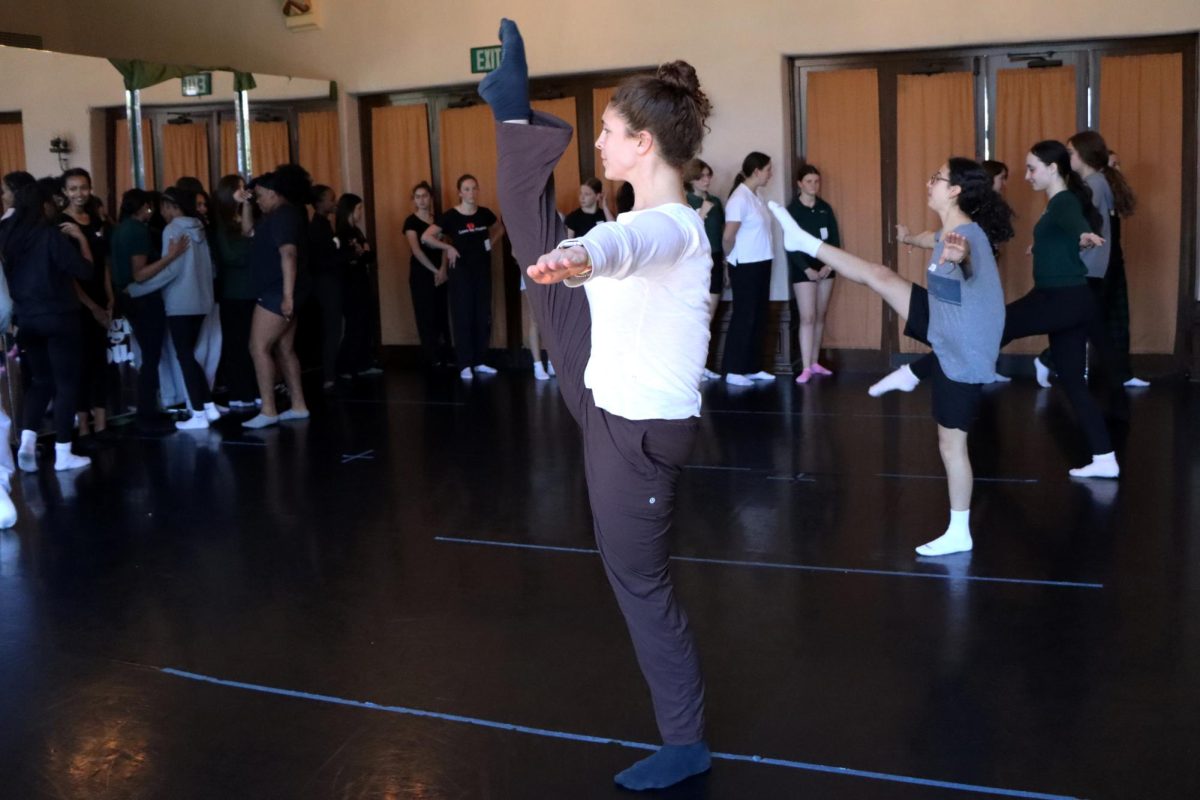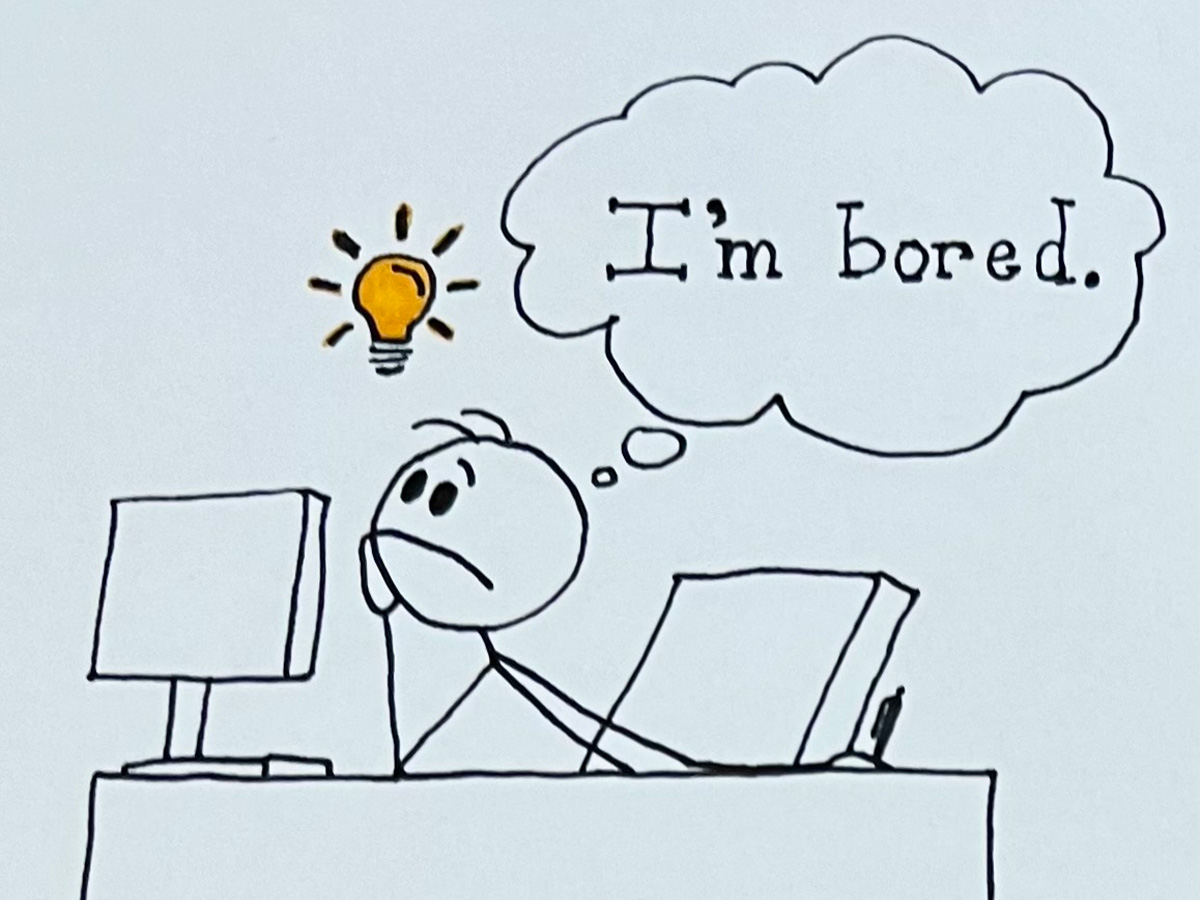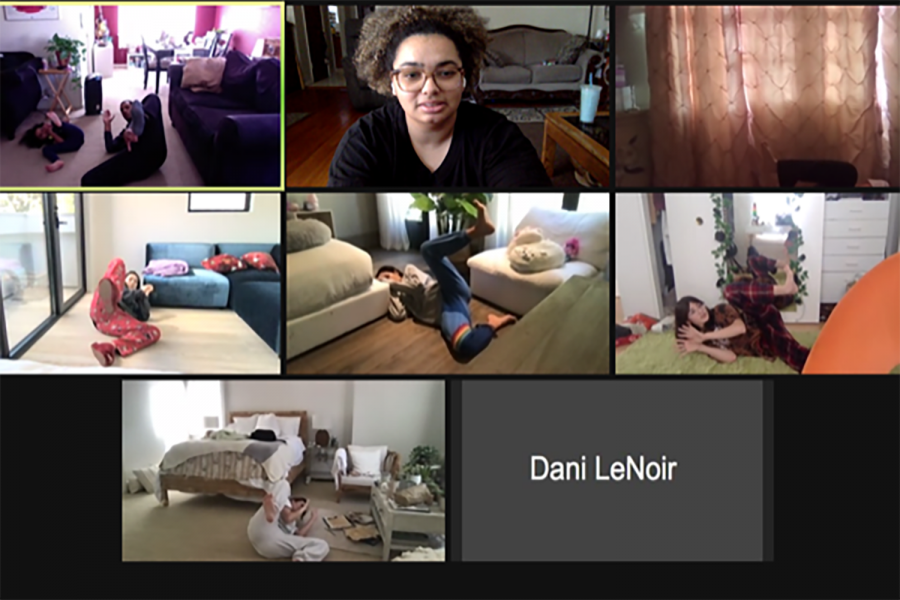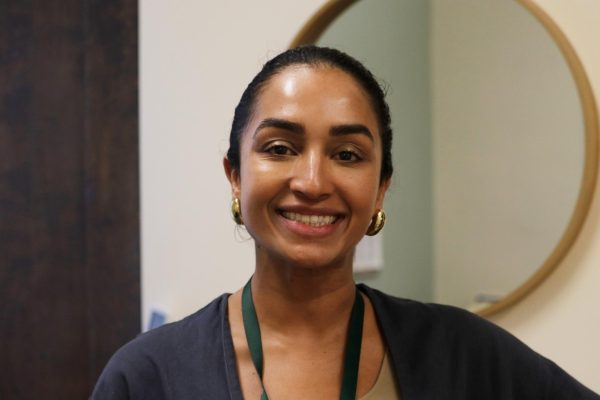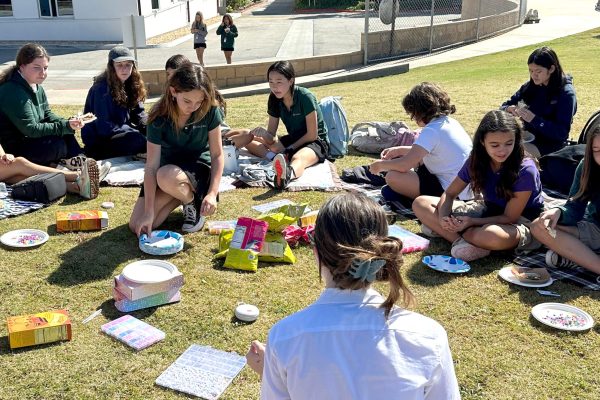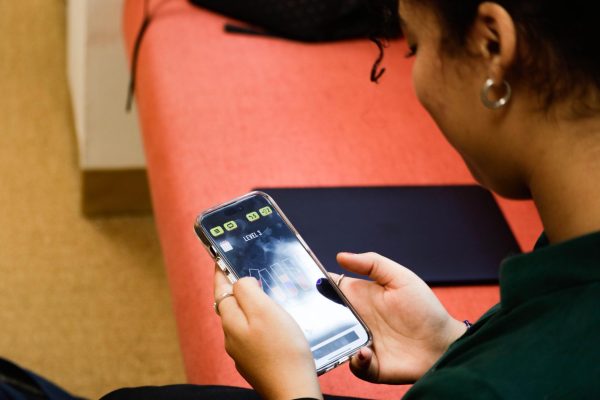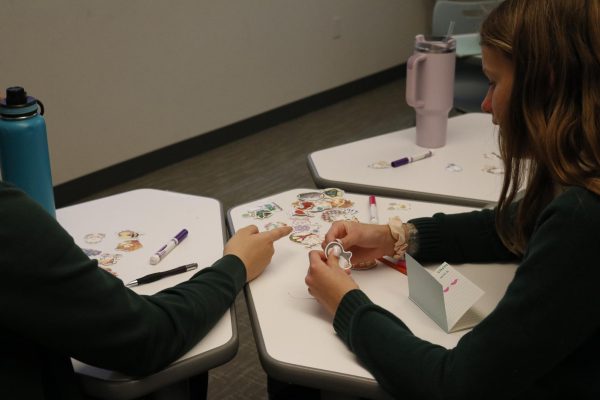Learning to fight back…at home?: Self defense classes adapt to virtual setting
Photo credit: Danielle Joy
Virtual sophomore self-defense class, led by IMPACT instructor Danielle Joy, practices kicking an attacker in their homes. Self-defense is a required part of the sophomore physical education curriculum, but classes have been conducted virtually due to COVID restrictions.
February 21, 2021
Each year, small groups of sophomore Archer students are tackled from behind by a man dressed in black padding standing over six feet tall as a part of the 12-week IMPACT self-defense course. They learn to defend themselves both verbally and physically against the instructor dressed in protection padding who is acting as an attacker. Now, sophomores fight with the air and take turns unmuting themselves to practice verbal scenarios over Zoom as the self defense class has been adapted to a virtual setting.
“So, in class we’ve discussed how to be aware of your surroundings, picking up on little details while moving through the world. And we’ve also we’ve still done physical fights. Just virtually it’s very different but it’s still very effective,” IMPACT teacher Danielle Joy said. “The way we apply the physical techniques, though, is we use visualization – So you’re visualizing your target. And so you can still do the same strikes still using the same force, but just because a person’s not there doesn’t mean that they won’t still be effective.”
Each year, sophomores rotate through a self-defense section, which is part of the physical education curriculum. In the virtual setting, instructors cut the class time from an hour to 40 minutes. The class sizes range from 5-11 people to allow the students to get the necessary practice.
“I have a sister in 12th grade, so she did it and everyone always enjoyed it. So it was a little bummed that I not getting to be at Archer and actually doing the moves on someone because I think that it is fun,” sophomore Rose Chuck said. “And it’s still really funny and I can’t stop laughing when I’m in [class], and the instructors are super nice. I like having a smaller class so [I don’t] feel uncomfortable or embarrassed. So it’s still been pretty fun.”
According to their website, “IMPACT chapters are committed to the belief that people are powerful and capable of protecting themselves.” The teachers emphasize the importance doing everything possible to avoid physical fighting, and so multiple of the virtual lessons are focused on understanding boundaries.
“When I found out we weren’t going to do self-defense online, I was kind of disappointed because I wonder how much better the experience would be if we were in person and physically defending ourselves instead of virtually doing it on screen,” sophomore Karen Garcia said. “And now I do still feel that way, but I’m learning a lot, despite that we’re not in person. And I’m learning how to like be more assertive and defend myself and learn to control my emotions of panic in case that were to happen in the outside world.”
To practice their skills, students will unmute one at a time for a verbal scenario with the instructor, who acts as a stranger. Students have also been practicing physical defense in the safety of their homes, but some are concerned about the success of the reality of using their learned-at-home physical defense skills.
“It doesn’t feel real. And I know it doesn’t feel real if you’re hitting someone in a full padded suit, but it does feel like something,” sophomore Sophia Altemus said. “I know it could actually happen, but it doesn’t feel like something that would actually happen and I don’t know if this would work unless I actually tried it on a person.”
Joy shared that the curriculum has been adapted for virtual learning by changing the approach to verbal strategies so they can ensure the students still feel the “adrenaline rush” of being in an in-person scenario. Joy also acknowledged the concern of students not being able to practice hitting someone, and ensured that the teaching is still effective.
“I feel like the biggest challenge is not being in person, and doing the physical strikes, hitting the person, because that can be the scariest thing to somebody. A lot of people have never hit a person full force before.” Joy said, “So not having that reinforcement, not having that knowledge through our classes, it’s a little different, but what we’re teaching is still very effective. I just wish that they were able to hit our guys.”
The lessons cover the primary skills needed for self-defense, including setting physical and verbal boundaries, understanding your surroundings and physical defense. Joy shared that her biggest hope for her students is that they understand they’re worth protecting and that they deserve to know these skills.
“She does a really good job at telling us like we deserve to feel like safe and like that our life matters. We’re learning this to help us defend ourselves.” Chuck said. “I just think that’s super important’ women should be able to defend themselves from whoever is attacking [whether] it’s physically or verbally, so I think that’s really important.”

